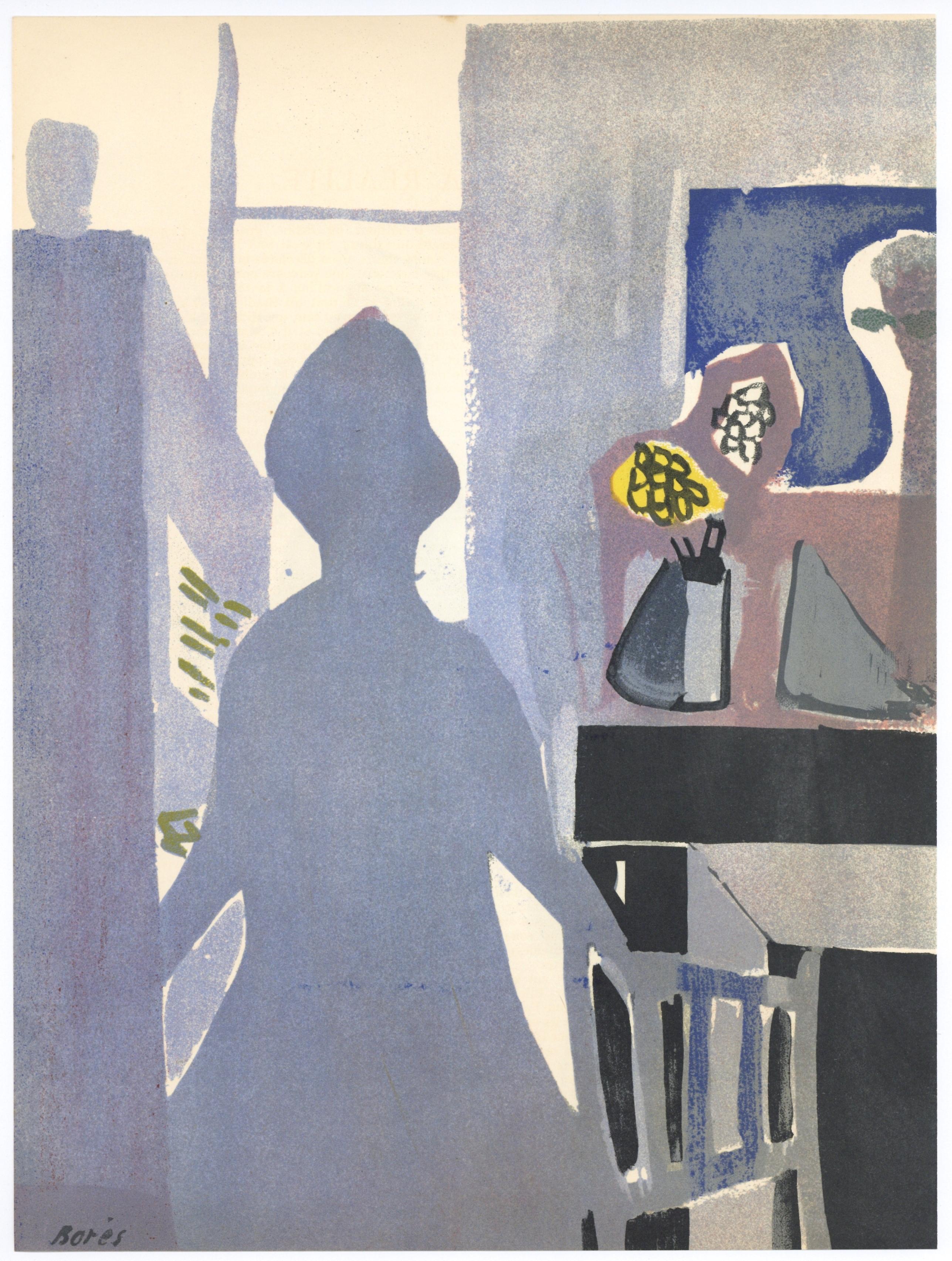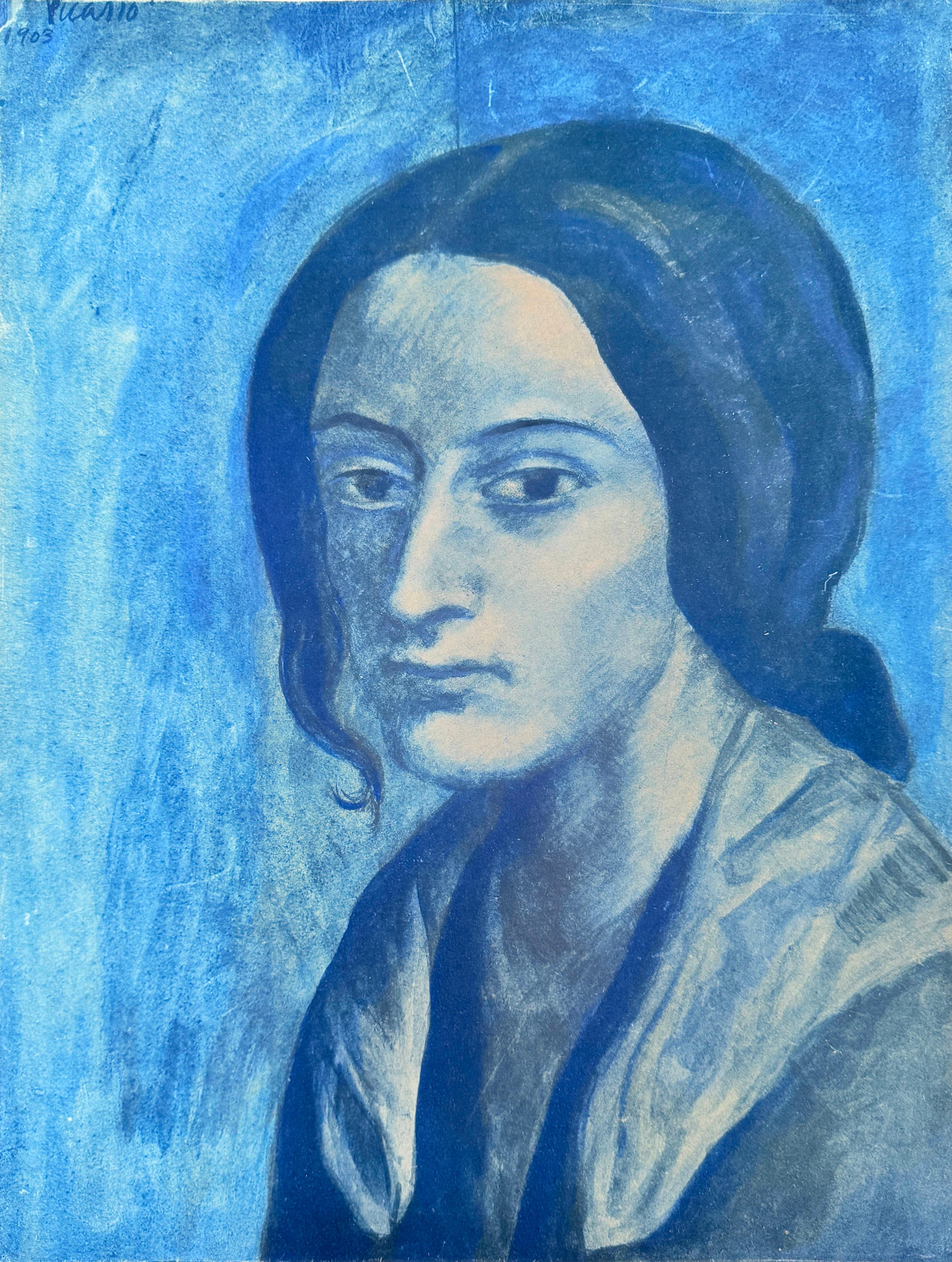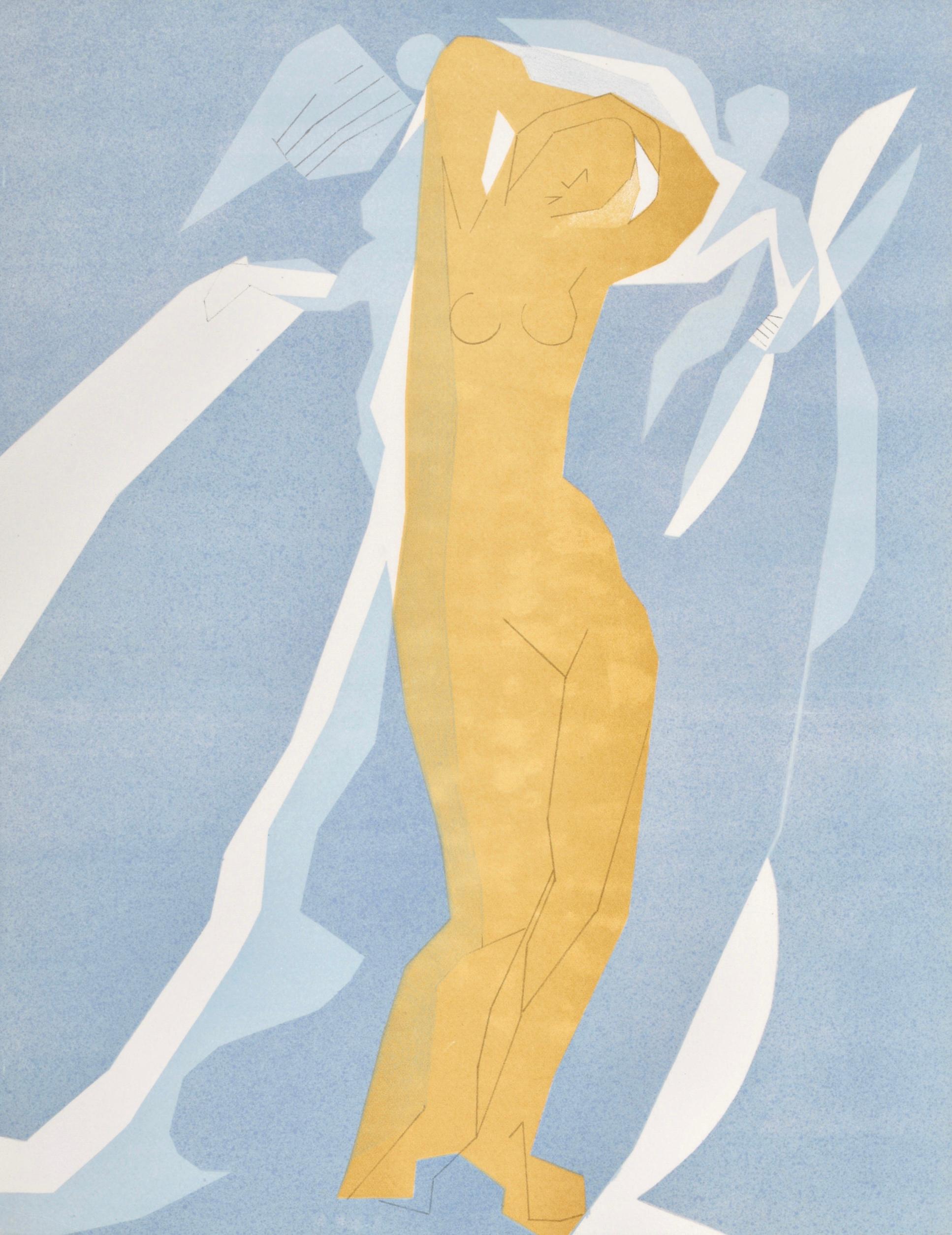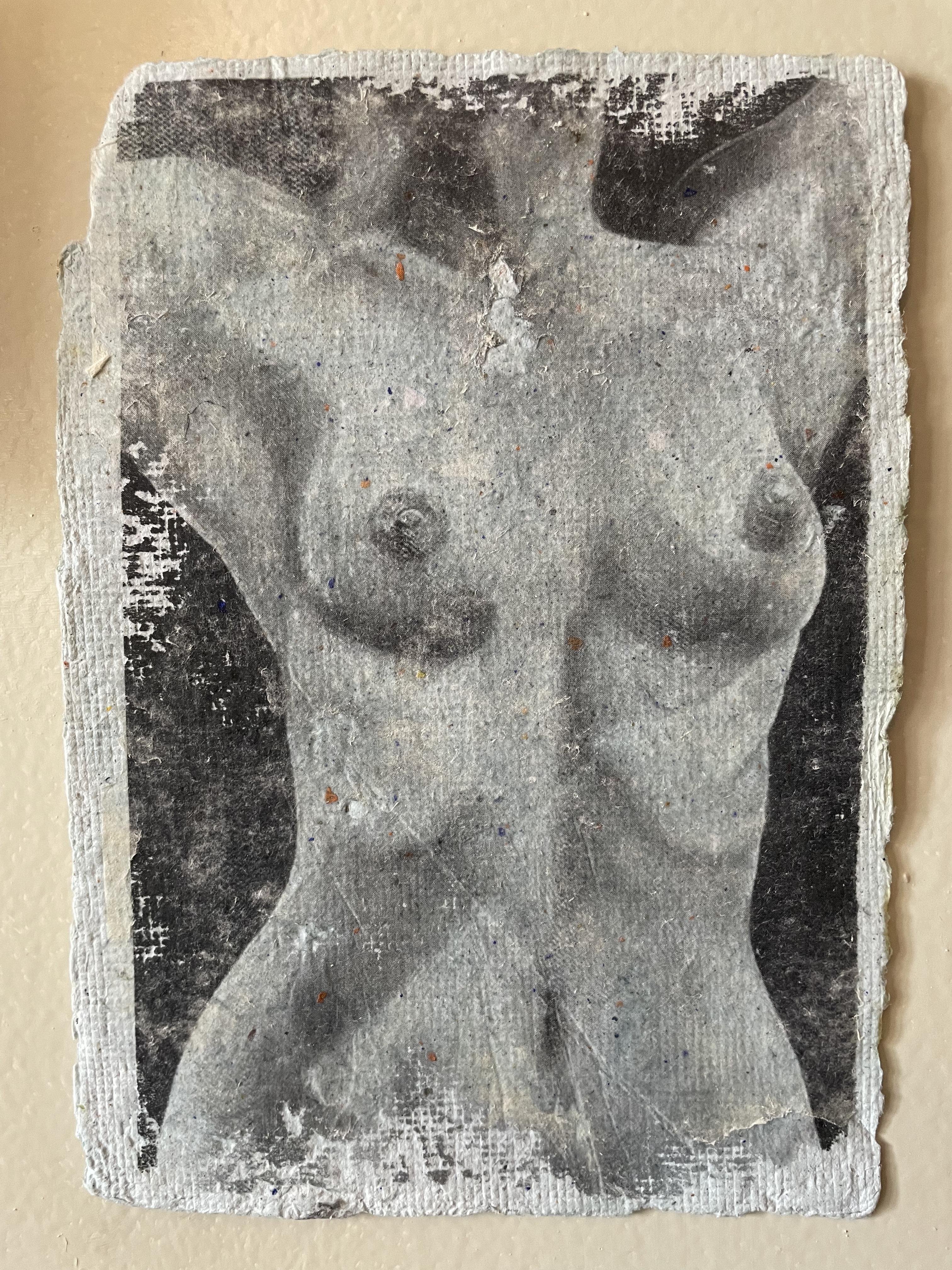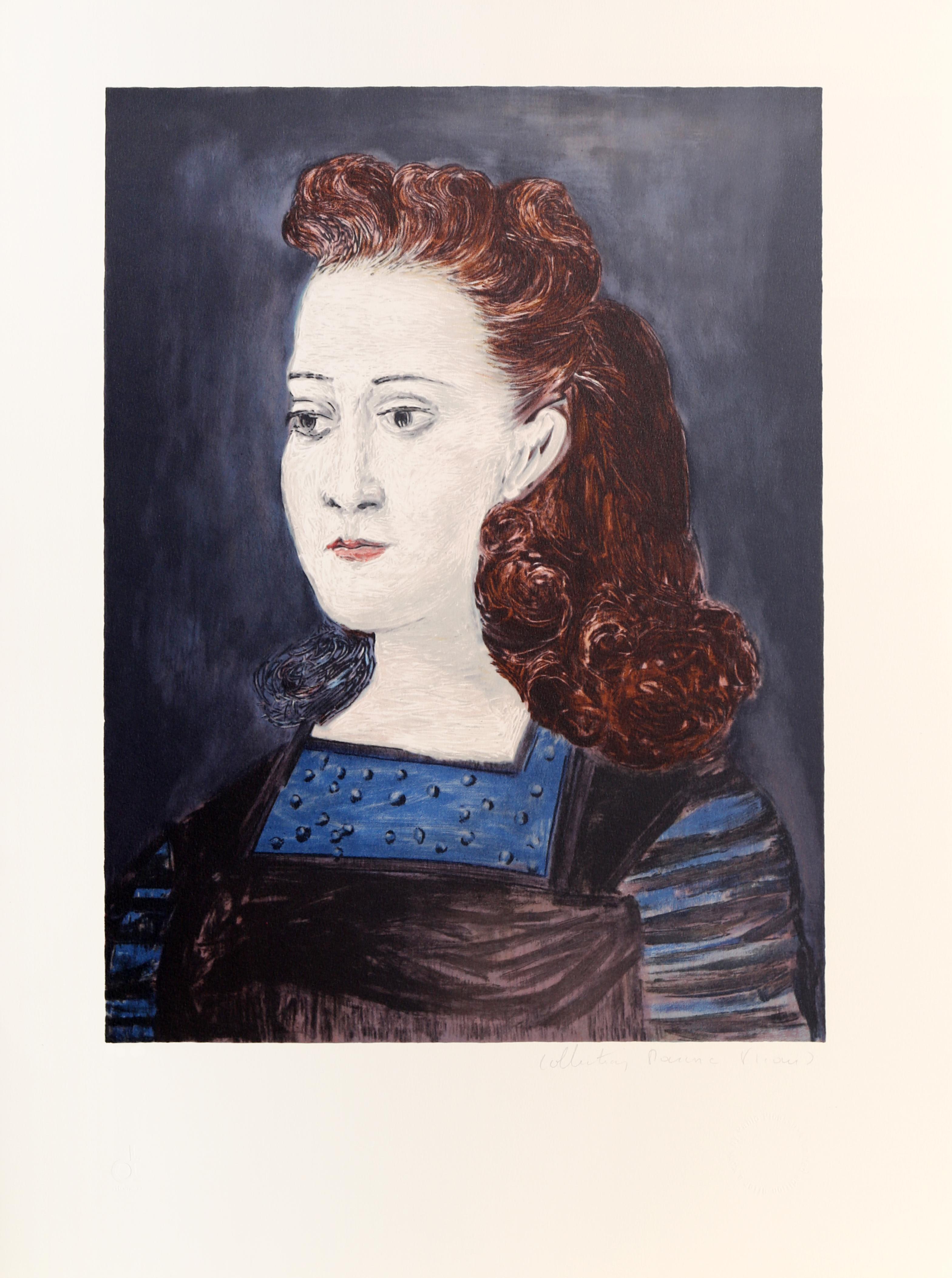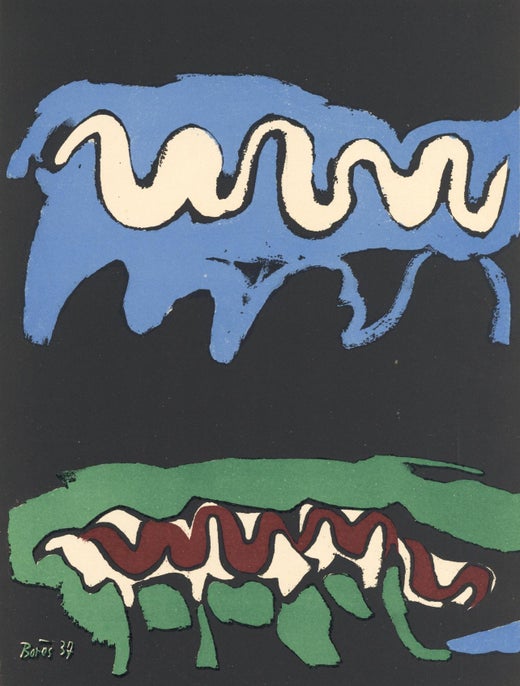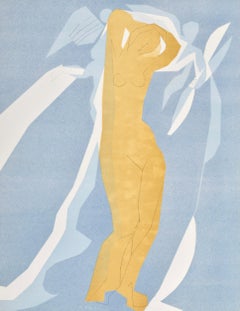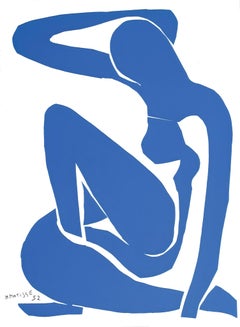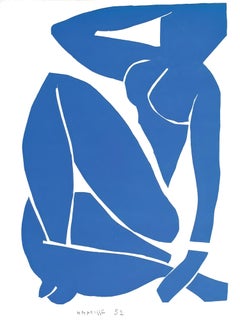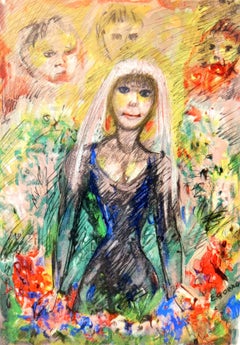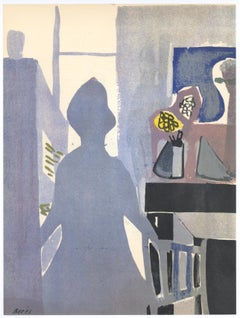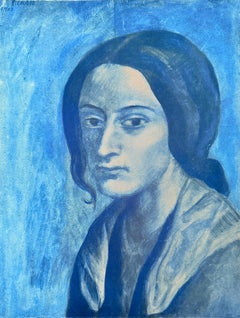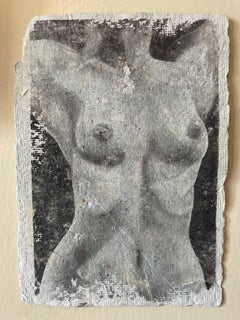Articles similaires à La Femme en Bleu, Verve : Revue Artistique et Littéraire
Vous voulez plus d'images ou de vidéos ?
Demander au vendeur plus d'images ou de vidéos
1 sur 11
Francisco BoresLa Femme en Bleu, Verve : Revue Artistique et Littéraire1953
1953
626,71 €
783,39 €20 % de remise
À propos de cet article
Lithographie sur papier vélin des Papeteries du Marais. Taille du papier : 14 x 10.25 pouces. Inscription : Signé dans la plaque et non numéroté, tel que publié. Notes : Extrait de l'album Verve : Revue Artistique et Littéraire, Vol. VII, N° 27-28, 1953. Publié par les Éditions de la revue Verve, Paris, sous la direction de Tériade, éditeur, Paris ; imprimé par Mourlot Frères, Paris, le 15 janvier 1953, dans un tirage de MM. Ce numéro double de Verve a été achevé d'imprimer le 15 janvier 1953 par Draeger pour la typographie et l'héliogravure et par Mourlot pour la lithographie. Notes complémentaires : Extrait de Poppy Sfakianaki, 'La revue Verve (1937-60) : Un tremplin pour la carrière de Tériade dans les éditions d'art', Journal of European Periodical Studies, 4.2 (Winter 2019), 70-89, En 1937, Tériade (1897-1983) rencontre David Smart (1892-1952), l'éditeur américain du magazine Esquire, qui lui propose de collaborer à la création du 'plus beau magazine du monde'. Smart reconnaît en Tériade non seulement ses capacités d'éditeur et ses connaissances en histoire de l'art, mais aussi son réseau professionnel et le nom qu'il s'est fait dans le monde de l'art parisien, autant d'atouts cruciaux pour une entreprise éditoriale. Ayant eu la conviction commerciale que la beauté "fait vendre", Smart entendait s'adresser au public américain, attiré par l'art français, y compris l'art moderne, et le mythe de la vie artistique à Paris. Pour sa part, Tériade voit dans cette Collaboration l'occasion d'une incursion sur le marché américain, puissant allié de l'art moderne en France. Les Éditions de la Revue Verve ont été fondées en novembre 1937, financées en grande partie par Smart, et dirigées par Tériade. Verve : Revue Artistique et Littéraire était une publication artistique luxueuse et ambitieuse, publiée non seulement en français, mais aussi en anglais dans les premières années, et distribuée en Europe et aux États-Unis. Sa configuration rappelle celle des revues françaises Cahiers d'art, Minotaure et Arts et métiers graphiques, ainsi que celle de la revue d'art américaine Coronet. Cependant, Verve était supérieur à la concurrence en raison de son iconographie abondante et de sa grande qualité d'impression. Son prix variait entre 60 et 150 francs (pour les numéros doubles) avant la guerre, et entre 120 et 350 francs pendant la guerre. Compte tenu de son prix élevé, le magazine s'adressait principalement aux marchands d'art, aux collectionneurs, aux bibliophiles et aux amateurs d'art fortunés. L'esthétique raffinée de la revue est due à son rédacteur en chef, Tériade, qui a cherché à développer une plate-forme de dialogue entre l'image et le texte, les arts visuels et la littérature. La dominante de chaque numéro reste son iconographie, composée de reproductions d'œuvres d'artistes modernes que Tériade admirait, et de " maîtres ", principalement de la tradition française, à côté de photos et de miniatures de manuscrits médiévaux. Tériade a sans doute réalisé avec sa revue une idée exprimée en 1934 selon laquelle les livres servaient de "musée idéal" ou d'exposition où sont rassemblés tous les chefs-d'œuvre artistiques, que Malraux développera plus tard dans Le Musée imaginaire (Genève : Skira, 1947), dont certaines parties paraîtront dans Verve. Pendant la Seconde Guerre mondiale, la périodicité de la revue a changé, devenant irrégulière, et la nature des sujets traités moins variée. Ainsi, les numéros publiés pendant la guerre (ainsi qu'en 1945 et 1946) sont exclusivement consacrés à la reproduction d'enluminures médiévales. Enfin, les numéros spéciaux de l'après-guerre présentent chacun la production récente d'un peintre d'art moderne. Seuls les numéros 8 (1940) et 27-28 (1952) font exception avec un résumé plus varié. L'accueil de Verve a été positif, comme en témoignent plusieurs articles de presse élogieux tout au long de sa diffusion. Le succès de la revue, la passion de Tériade pour l'art moderne et les manuscrits médiévaux, son admiration pour les publications d'Ambroise Vollard et d'Albert Skira, sa connaissance du monde des bibliophiles, l'amènent bientôt à amplifier son activité éditoriale. En 1943, malgré les difficultés pratiques imposées par la guerre, paraît son premier livre d'artiste, écrit et illustré par Georges Rouault. Jusqu'en 1975, Tériade publie aux Éditions de la Revue Verve, neuf livres d'artistes modernes, tels que Henri Matisse, Pablo Picasso, Marc Chagall, Joan Miró, entièrement composés (texte et images) par les artistes ; dix-sept livres illustrés par des artistes modernes reconnus ; un album de lithographies de Fernand Léger sur Paris ; deux albums photographiques d'Henri Cartier-Bresson ; deux monographies des artistes André Beaudin et Francisco Borès ; une luxueuse série de reproductions d'enluminures médiévales ; et une série de portfolios sur la grande architecture française. En définitive, l'étude comparative de la revue et des éditions de Verve : Revue Artistique et Littéraire illustre l'importance de la dynamique relationnelle tacite qui résulte des relations de collaboration et d'échange de capital symbolique fondées sur des perceptions et des intérêts communs, ainsi que sur des sentiments d'amitié et d'appréciation mutuelles d'acteurs du monde de l'art qui partagent une culture visuelle et bibliophilique et contribuent ainsi au succès de la revue et de la maison d'édition.
FRANCISCO BORES (1898-1972) est une figure importante de l'art européen du XXe siècle. Sa présence était importante au sein de la deuxième vague d'artistes espagnols arrivés à Paris dans les années 1920, qui comprenait également Pablo Picasso, Ginés Parra, Pedro Flore, Antoni Clavé ; bien que dans son propre pays, il n'ait pas été réellement reconnu avant les années 1970, lorsque les aspects de son travail qui ne correspondaient pas à l'informalisme et au réalisme social dominants ont finalement été appréciés. Le style de Bores s'est forgé au contact des plus grands peintres de la première avant-garde : Pablo Picasso et Henri Matisse. Il admire leur manière de construire les formes, le classicisme, et plus tard l'explosion cubiste. Bores harmonise ces influences dans son travail et les dépasse. Ses œuvres sont exposées au Museo de Arte Contemporáneo de Madrid.
- Créateur:Francisco Bores (1989 - 1972, Espagnol)
- Année de création:1953
- Dimensions:Hauteur : 35,56 cm (14 po)Largeur : 26,04 cm (10,25 po)
- Support:
- Mouvement et style:
- Période:
- État:
- Adresse de la galerie:Southampton, NY
- Numéro de référence:1stDibs : LU1465216383682
Francisco Bores
Francisco Bores López (Madrid, 5 mai 1898 - Paris, 10 mai 1972) est un peintre espagnol de la Nouvelle École de Paris. Sa formation artistique trouve son origine à la fois dans l'académie de peinture de Cecilio Pla, où il rencontre Pancho Cossío, Manuel Ángeles Ortiz ou Joaquín Peinado, et dans les rencontres littéraires madrilènes liées à l'ultraïsme. À cette époque, il réalise des gravures et des gravures sur bois pour un grand nombre de magazines tels que Horizonte, Cruz y Raya, Index, Revista de Occidente. En 1922, il participe à l'Exposition nationale des beaux-arts. En 1925, il participe à la première exposition de la Société des artistes ibériques. Le peu de succès de cette exposition le pousse à se rendre à Paris. Dans cette ville, il partage un studio avec le peintre espagnol Pancho Cossío et rencontre également Picasso et Juan Gris. En 1927, il organise sa première exposition personnelle à Paris. Dès lors, Artistics s'intègre au milieu artistique parisien où il vivra pratiquement toute sa vie. En 1928, il expose pour la première fois dans une galerie aux États-Unis. En 1930, il expose à nouveau, dans le cadre d'une exposition de groupe au Museum of Modern Art de New York. Dans les années qui suivent, il continue d'exposer dans différentes galeries parisiennes, telles que la galerie Georges Petit, la galerie Bernheim et la galerie Vavin Raspail. Il participe également à plusieurs expositions collectives, notamment l'exposition d'art espagnol contemporain au musée du Jeu de Paume à Paris, il illustre également des livres et des magazines d'art tels que Minotauro. Contrats avec les Zwemmer Galleries à Londres et la Galerie Simon à Paris. Exhibitions in the United States, à la Buchholz Gallery de New York. Il passe la Seconde Guerre mondiale à Saint Jean de Luz où il reprend son amitié avec Matisse. En 1947, l'État français acquiert pour la première fois une œuvre de Bores, en 1949 c'est le Museum of Modern Art de New York qui acquiert ses peintures. Son activité d'exposition reprend dans toute l'Europe : France, Allemagne, Danemark, Italie. Son inclusion dans les peintres de la galerie Louis Carré, l'une des plus prestigieuses de Paris, et donc du monde, dans ces années-là (1954), est remarquable. Il continue, sporadiquement, à illustrer des livres (cinq linogravures "Le cri pour la mort d'Ignacio Sánchez Mejias" de Federico García Lorca, des lithographies pour illustrer les œuvres complètes d'Albert Camus publiées par l'Imprimerie nationale française en 1962). En 1969, il expose à la Theo Gallery de Madrid ce que représente son approche du public espagnol, qui ignore pratiquement tout de son travail, sauf dans les milieux professionnels où, en revanche, il est très apprécié. En 1971, il expose à nouveau dans cette même Theo Gallery, et décède à Paris en 1972. Dans l'œuvre de Bores, le critique Joaquín de la Puente distingue plusieurs périodes : Le renouveau du classicisme (1923-1925)
Néo-cubisme (1925-1929)
Peinture-Fruit (1929-1933)
Scènes d'intérieur (1934-1949)
Le style en blanc (1949-1969)
À propos du vendeur
4,9
Vendeur Platine
Vendeurs premium dont la note est supérieure à 4,7 et le délai de réponse de 24 heures maximum
Établi en 1978
Vendeur 1stDibs depuis 2021
1 177 ventes sur 1stDibs
Temps de réponse habituel : <1 heure
- ExpéditionRecherche du devis...Expédition depuis : Southampton, NY
- Politique des retours
Certaines parties de cette page ont été traduites automatiquement. 1stDibs ne garantit pas l'exactitude des traductions. L'anglais est la langue par défaut de ce site web.
Garantie d'authenticité
Bien qu'il soit peu probable que la situation se présente, dans le cas où vous rencontreriez un problème d'authenticité d'un article, contactez-nous dans un délai d'un an pour obtenir un remboursement intégral. DétailsGarantie de remboursement
Si votre article n'est pas conforme à la description, est endommagé pendant le transport ou ne vous est pas livré, contactez-nous sous 7 jours pour obtenir un remboursement intégral. DétailsAnnulation sous 24 heures
Vous disposez d'un délai de 24 heures pour annuler votre achat sans motif.Des vendeurs professionnels agréés
Nos vendeurs de renommée mondiale doivent respecter des normes strictes en matière de service et de qualité, afin de préserver l'intégrité de nos fiches produit.Garantie d'alignement des prix
Si vous constatez qu'un autre vendeur a mis en vente le même article à un prix inférieur sur un autre site, nous nous alignerons sur ce prix.Livraison en toute confiance à l'international
Notre réseau de transporteurs de premier ordre propose des options d'expédition spécialisées dans le monde entier, y compris des livraisons personnalisées.Plus d'articles de ce vendeur
Tout afficherNu de femme en jaune et bleu, Regards sur Paris, André Beaudin
Par Andre Beaudin
Lithographie sur papier vélin d'Arches. Inscription : non signé et non numéroté, tel que publié. Bon état. Notes : d'après l'in-folio, Regards sur Paris, 1963. Publié par André Saure...
Catégorie
années 1960, Moderne, Estampes - Paysage
Matériaux
Lithographie
906 € Prix de vente
20 % de remise
Livraison gratuite
Matisse, Nu Bleu VI (Duthuit 139), Verve : Revue Artistique (après)
Par Henri Matisse
Lithographie sur papier vélin du Marais. Inscription : Non signé et non numéroté, tel que publié. Bon état. Notes : Extrait du volume Verve : Revue Artistique et Littéraire, Vol. IX,...
Catégorie
années 1950, Moderne, Estampes - Paysage
Matériaux
Lithographie
1 256 € Prix de vente
20 % de remise
Livraison gratuite
Matisse, Nu Bleu IX (Duthuit 139), Verve : Revue Artistique (après)
Par Henri Matisse
Lithographie sur papier vélin du Marais. Inscription : Non signé et non numéroté, tel que publié. Bon état. Notes : Extrait du volume Verve : Revue Artistique et Littéraire, Vol. IX,...
Catégorie
années 1950, Moderne, Estampes - Paysage
Matériaux
Lithographie
La mariée, Vingt fables de La Fontaine, Edouard Goerg
Par Edouard Goerg
Gravure sur bois sur papier vélin d'Arches. Inscription : signée dans la planche et non numérotée, telle qu'elle a été publiée. Bon état. Notes : d'après l'in-folio, Vingt fables de ...
Catégorie
années 1960, Moderne, Estampes - Paysage
Matériaux
Gravure sur bois
626 € Prix de vente
20 % de remise
Livraison gratuite
Matisse, Nu Bleu VII (Duthuit 139), Verve : Revue Artistique (après)
Par Henri Matisse
Lithographie sur papier vélin du Marais. Inscription : Non signé et non numéroté, tel que publié. Bon état. Notes : Extrait du volume Verve : Revue Artistique et Littéraire, Vol. IX,...
Catégorie
années 1950, Moderne, Estampes - Paysage
Matériaux
Lithographie
836 € Prix de vente
20 % de remise
Livraison gratuite
Matisse, Nu Bleu I (Duthuit 139), Verve : Revue Artistique (après)
Par Henri Matisse
Lithographie sur papier vélin du Marais. Inscription : Non signé et non numéroté, tel que publié. Bon état. Notes : Extrait du volume Verve : Revue Artistique et Littéraire, Vol. IX,...
Catégorie
années 1950, Moderne, Estampes - Paysage
Matériaux
Lithographie
836 € Prix de vente
20 % de remise
Livraison gratuite
Suggestions
"La femme en bleu" lithographie originale
Par Francisco Bores
Support : lithographie originale. Extrait du rare numéro de Verve (volume 7, numéro 27-28), publié à Paris par Teriade en 1952 et imprimé par Mourlot. Taille : 14 x 10 3/8 pouces (35...
Catégorie
années 1950, Estampes et éditions
Matériaux
Lithographie
Portrait mélancolique d'une femme en bleu
Par Pablo Picasso
Pablo Picasso (1881-1973) - Portrait mélancolique d'une femme en bleu
Pochoir de 1961.
L'édition : 442/500 écrit au crayon.
Dimensions de l'œuvre : 53,8 x 41,5 cm
Éditeur : Au Ve...
Catégorie
années 1960, Moderne, Estampes - Figuratif
Matériaux
Pochoir
Femme sur bleu
Brittany Noriega
Femme sur bleu
Impression par transfert laser sur papier fait main
Année : 2021
Taille : 8.5x6in
Signé à la main
L'ACO a fourni
Réf. : 924802-1654
Tags : figuratif,...
Catégorie
années 2010, Moderne, Estampes et éditions
Matériaux
Papier fait main, Laser
165 € Prix de vente
40 % de remise
La femme sur le bleu
Par Kismine Varner
Gravure vibrante d'une femme sur fond bleu par l'artiste américaine Kismine Varner, vers 1990. Signé en bas à droite.
Œuvre d'art originale sur papier présentée sur un tapis blan...
Catégorie
années 1990, Estampes - Portrait
Matériaux
Eau-forte
Femme à la Collerette Bleue
Par Pablo Picasso
Vue sous un angle différent, l'estampe de Pablo Picasso représentant cette femme met en évidence la polyvalence de l'artiste. Sur un fond prune profond, le modèle anguleux est représ...
Catégorie
Fin du 20e siècle, Cubisme, Estampes - Portrait
Matériaux
Lithographie
Lithographie moderne du portrait d'une jeune fille en bleu de Charles Levier
Par Charles Levier
La fille en bleu
Charles Levier, Français (1920-2003)
Date : circa 1970
Lithographie, signée au crayon à gauche.
Edition de 250
Taille de l'image : 24 x 17 pouces
Taille : 76,2 x 55,...
Catégorie
années 1970, Fauvisme, Estampes - Figuratif
Matériaux
Lithographie
